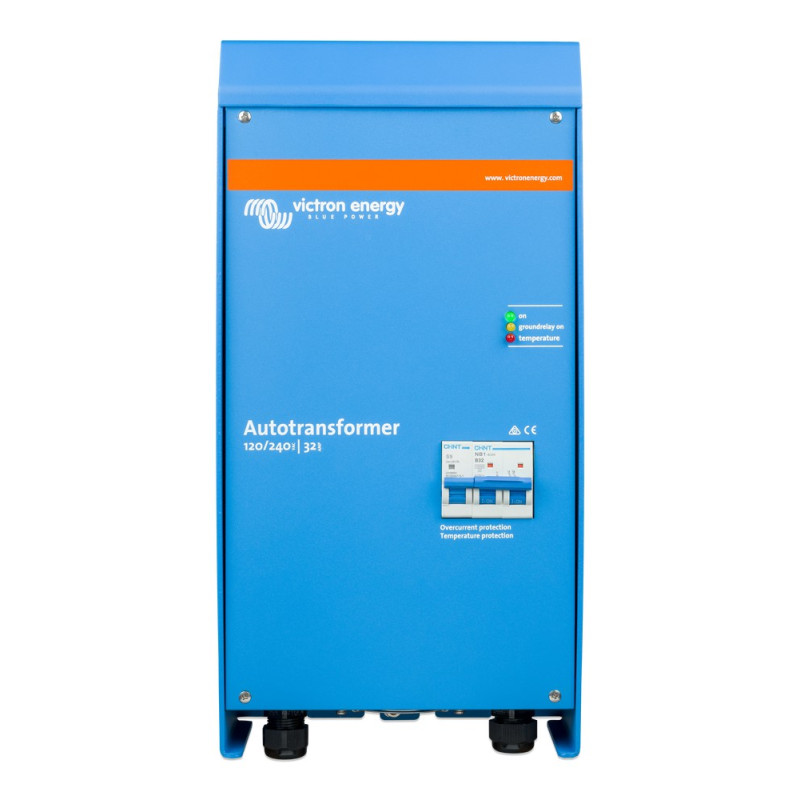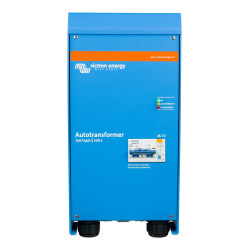Victron Autotransformer 120/240V-32A
Victron Autotransformer 120/240V-32A
An Autotransformer can be used for step up, step down and split phase output balancing purposes.
While the step up and step-down functions are fairly straightforward, split phase output balancing may require some more attention.
Victron Autotransformer 120/240V-32A
The Autotransformer: for step up, step down and split phase balancing
An autotransformer can be used for step up, step down and split phase output balancing purposes. While the step up and step down functions are fairly straightforward, split phase output balancing may require some more attention.
Consider for example a 30A 120/240V split phase supply. The supply could be the grid, a generator or two stacked inverters. Some of the loads connected are 240V, others are 120V. On each 120V leg the load should not exceed 30A. The problem is that as soon as 120V loads are connected, the two legs will show a different current. This is because the 120V loads on the two legs will never be balanced. A 120V 1200W hairdryer, for example, will draw 10A from one leg. A 120V washing machine could even draw in excess of 20A from one leg. Between the two legs the difference in current, or current unbalance, will therefore often be 20A or more. This means that the 30A supply will not be used up to its full potential. By the time one leg draws 30A, the other leg may be drawing no more than 10A, and increasing the 240V load, for example, will result in an overload of one leg while the other leg still has spare capacity.
Theoretically, the total power that can be drawn from a 30A 120/240V supply is 30 x 240 = 7,2 kVA. In case of 20A unbalance, the practical maximum will be 30 x 120 + 10 x120 = 4,8kVA, or 67% of the theoretical maximum.
The solution is an Autotransformer. By leaving the neutral of the split phase supply unused, and connecting an Autotransformer to create a new neutral, as shown in figure 1, any load unbalance is ‘absorbed’ by the Autotransformer. In case of a 30A supply, the load can be increased to 7,2kVA, and a 20A load unbalance will result in one leg supplying 40A, and the other leg 20A. The 20A difference will flow through the neutral and the windings of the Autotransformer. The current through both 120V wires of the split phase supply will be 30A.
Ground relay for use with Multi or Quattro Inverter/Chargers included
When operating in inverter mode, the neutral output of the inverter/charger must be connected to ground to guarantee proper functioning of a GFCI. In case of a split phase supply the neutral must be grounded. For this purpose a grounding relay is built in the autotransformer’s enclosure. The relay is controlled by the 230/240V Multi or Quattro. (The internal grounding relay in the 230/240V Multi or Quattro must be disabled)
Temperature protected
In case of overheating, the Autotransformer is disconnected from the supply. Reset is manual.
An alternative to stacked inverters
The alternative to stacking two 120V inverters to provide a 120/240V split phase supply is a 240V inverter with an additional Autotransformer. Two stacked 120V 3kVA inverters will supply up to 25A to each 120V leg. If the load on one leg is less than 25A, the maximum load on the other leg is still limited to 25A. One 240V 5kVA inverter with a 32A Autotransformer will supply up to 21A of balanced load to each 120V leg. Fewer loads on one leg will however result in more power being available on the other leg, with a maximum unbalance of 32A. Therefore the load can be up to 38,5A on one leg if the load is not more than 3,5A on the other leg (maximum unbalance: 38,5 – 3,5 = 35A). If load unbalance is to be expected, a lower power 240V inverter with autotransformer will therefore be preferable to the stacked inverter solution.
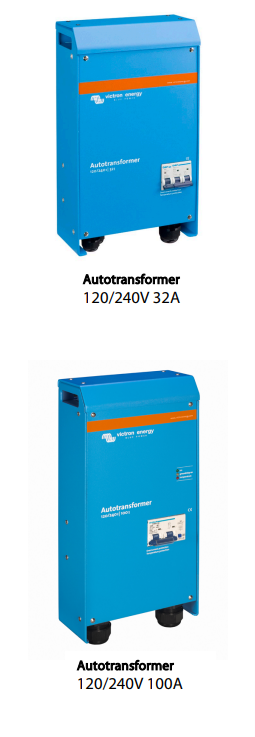
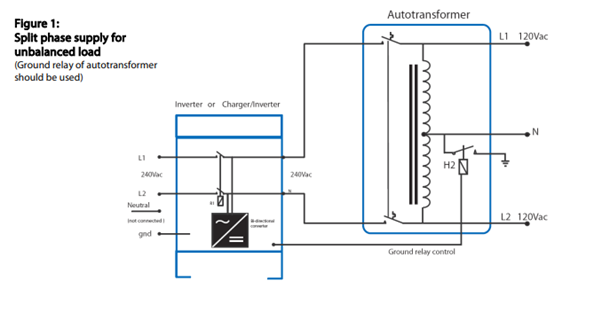
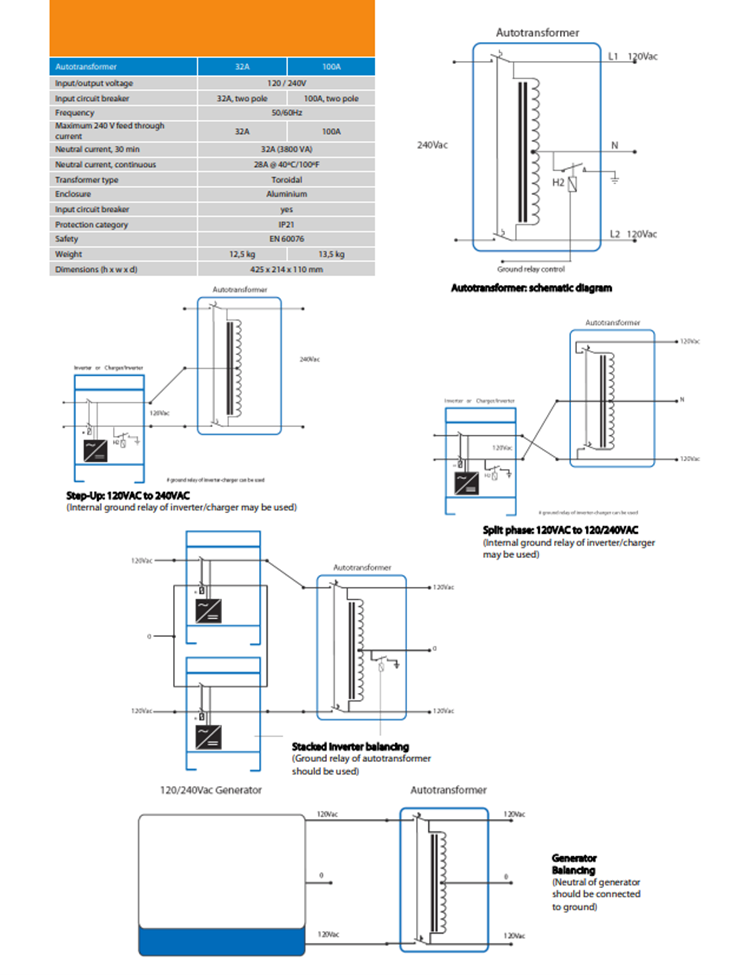
Data sheet
| Protection | IP67 |
|---|---|
| Length (mm) | 16000 |
| Nominal Capacity | 16 Amp |
| Nominal Voltage | 230 Vac |
| Maximum Charge Current | 16 A |
Reviews
No customer reviews for the moment.
You need to be logged in or create an account to give your appreciation of a review.


